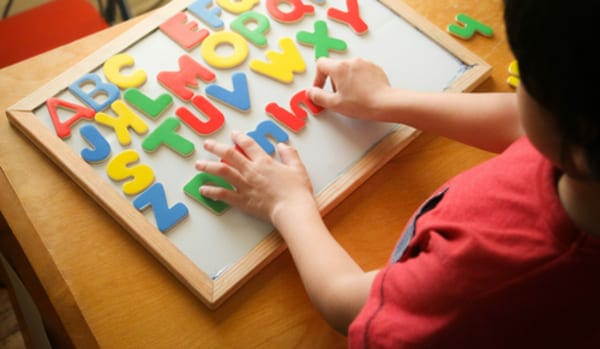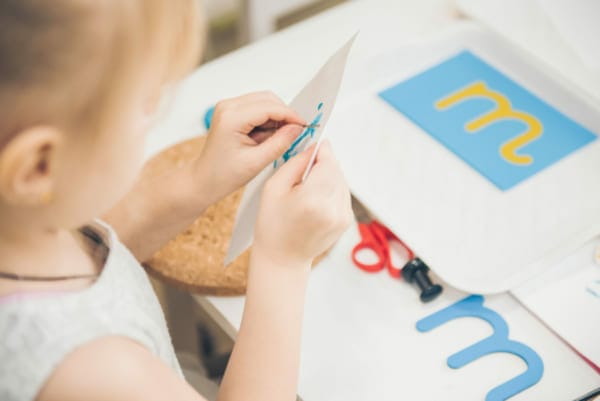Handwriting is a tricky subject to make fun and motivating for children, especially if they are already having difficulty with it. Repetition and letter formation practice is great, but that’s only addressing one side of the problem. Here are some FUN ways to strengthen the foundational components of handwriting without even picking up a pencil!

Kinesthetic learning and proprioceptive work is a great way to tap into the brain-body connection and get the whole body involved in learning. Movement in general is a great warm up activity to prepare for work.
- Alphabet Yoga: https://www.youtube.com/watch?v=O0Bb5T2-b1A
- Alphabet Exercise (The OT Toolbox)
- Alphabet Animal Walks: Use painters tape, couch cushions, a thin blanket (anything really) to make a large letter in an open space and have the child bear walk across it – Practicing letter formation and orientation using the whole body.
- Tracing letters on the child’s back and having them guess what letter is being formed. You can even let them trace letters on your back too!
Multi-sensory activities: Using sensory input such as tactile (touch), while facilitating the fine motor, visual motor, and motor planning skills needed for letter formation and pre-writing strokes.
- Taste safe methods: Place a thin, even layer or either salt, flour, rice, or even ground up cheerios in a flat tray
- Using the great outdoors: Using a sandbox or dirt and a stick to form or trace letters. Hide letter magnets in sand and have the child find them, then create them!

- Use foam or shaving cream. The child can use their fingers, a paintbrush, or Q-tip. A mess-free option is using colored gel in a sealed bag.
- Play-Doh: Roll out dough into “snakes” and then turn them into letters.
- Use wiki sticks to trace letters
- Letter themed crafts

Add in some extra fun and strengthening by having the child use vertical surfaces such as a chalkboard, using glass markers or shaving cream to draw on windows or mirrors, tapping paper to a wall to color, paint, or draw on, using bath paint on the walls in a shower… Vertical surfaces are a great tool to use for increased proximal upper extremity strength and stability, which is needed for handwriting!
Additional Links:
- The Two Sides of the Hand and Their Role in Fine Motor Development
- 10 Ordinary Household Items for Occupational Therapy Activities
- Sensory Play for Language Development
References:
Finn, E. (2020, July 20). Dysgraphia 101- Introduction And Strategies For Understanding Dysgraphia in Children. Retrieved from https://www.occupationaltherapy.com/ot-ceus/review/4844/1417939/5eb5939791212a2d69
M.C. (2021) Handwriting: A Multisensory Approach. Retrieved from https://www.therapyatplay.com/handwriting-a-multisensory-approach/#:~:text=Essentially%20a%20multisensory%20approach%20to,to%20engage%20in%20handwriting%20tasks.

